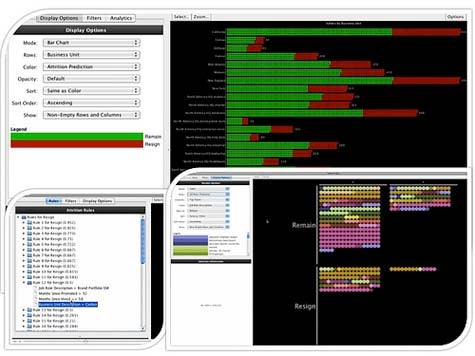In most companies, the single most important asset they have is generally the most poorly leveraged. Ask any senior manager what their most important asset is and the answer is almost invariably their people. In fact, a recent survey of CEOs conducted by IBM found that 71 percent cited human capital as their greatest source of sustained economic value.
Yet, in terms of understanding who contributes what to the organization, most senior managers are operating more on feelings than factual knowledge.
Looking to pump a little more factual analysis into employee evaluations, IBM this week launched IBM Workforce Analytics, a mix of analytics applications delivered as a services and IBM consulting services, which promises to help senior business leaders more readily identify who contributes exactly what business value to the organization.
According to Murray Campbell, senior manager for business analytics within IBM Research, IBM has been using these tools to analyze its own people for years. But following IBM’s recent acquisition of Kenexa, which specializes in talent management and recruitment applications, Campbell says bringing these capabilities to market is now a natural complement to IBM’s new expanded focus on workforce management.
IBM Workforce Analytics consists of IBM Survey Analytics and IBM Retention Analytics Services, delivered primarily as a cloud service. To make sure the data collected is in a form that leads to relevant analysis, IBM Workforce Analytics includes a consulting engagement that is focused mainly on ensuring data quality.
Campbell says that IBM Workforce Analytics isn’t so much intended to replace human evaluation of workforce talent as much as augment it. As with many business decisions, there is a tendency to rely more on instinct and experience, and that leads to evaluations that may not reflect factual evidence. In addition, when it comes to personnel, there is a widespread tendency to let personal feelings cloud judgments in the absence of hard data.
In addition to evaluating workforce performance, Murray says IBM Workforce Analytics is designed to allow managers to model what-if scenarios that analyze the potential impact of losing or hiring any employee.
Murray concedes that anything involving people is always a complex decision involving a lot of tangible and intangible variables. It’s just that at the moment, when it comes to employee recruitment and retention, the decision-making process is far too weighted toward the intangible.



